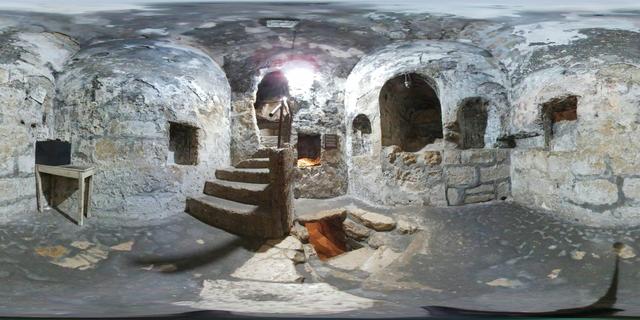The first Arab-Israeli war of 1948 ended in a landslide victory for the Israeli army. The Nakba, so called by the Arab countries, marked a crucial turning point in the history of Palestine and the entire Middle East region.
At the end of the war of '48, the United Nations issued Resolution 194 which enshrined the right of return of thousands of Palestinian refugees and free access to the Holy Places.
This resolution has never been implemented, neither by the international community nor by the Government of Israel.
Negotiations, agreements, regional and international mediations, dialogues, signatures, a Nobel Peace Prize! Nothing has served to achieve the long-awaited peace between Israel and the occupied Palestinian territories.
All the attempts mentioned above since 1967 have always had as their response violent protests, stone throwing, imprisonment, ambushes, firefights ended in the blood of tens of thousands of victims, often civilians and minors.
Divisions within the Jewish community
We have seen how Prime Minister David Ben Gurion's policy of welcoming every single Jew from all over the world to Israel has brought many difficulties to the newborn nation.
This over the years has created a problem within the Jewish community itself. In fact, the first Jews settled in Palestine were from European countries and are called Ashkenazi Jews.
Ben Gurion's invitation to all Jews to build the new state of Israel also attracted many Jews from Arab countries, the so-called Sephardim. Suffice it to say that 45,000 Jews arrived in Israel from Yemen alone.
The Yemeni Jewish community is in fact one of the oldest in the Arabian Peninsula.
Ashkenazim have always felt somewhat superior to Sephardic Jews and there have been episodes of violence that led, along with other issues, to Ben Gurion's retirement from political leadership in 1963. Levi Eshkol was elected as Prime Minister until 1969.
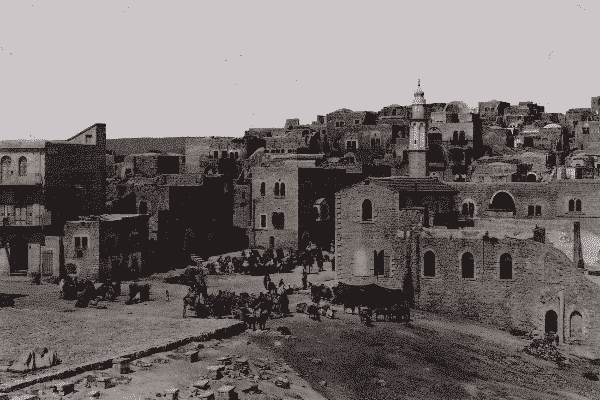
The first half of the sixties were a period of recession, unemployment and economic crisis for Israel. Added to this is the growing hatred between the two Arab and Jewish communities. To understand the gravity of the situation, it is enough to listen to the Arab TV and radio stations that continuously use the word "exterminate" addressed to the Jews. The latter live in terror of another Holocaust and a real threat to their existence.
Not only threats, but also concrete actions consolidate the fear and insecurity of the inhabitants of Palestine. From the Heights of the Syrian Golan, heavy-gun attacks against Israeli locations in the northern Galilee are incessantly heard.
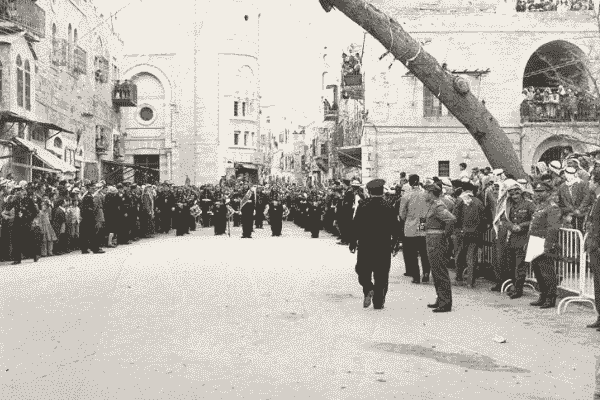
The Six-Day War
In May 1967, Nasser ordered his army to recapture Sinai (which had been a demilitarized zone for 10 years). After an escalation of violence from all sides, Egypt blocks access routes to the Israeli port of Eilat. This provocation can only lead to war.
On June 5, 1967, the third Arab-Israeli conflict broke out.
The conflict will become known as the "Six-Day War" and the reason is obvious: at 18:00 on June 10, '67, the general ceasefire is proclaimed.
As is known, it was a landslide victory for the Israeli army. A victory determined from the first hours of the conflict following the destruction of more than 400 Egyptian, Syrian and Jordanian air force aircraft. 70,000 israeli army personnel and 700 armored vehicles advance in Sinai and the Gaza Strip without encountering resistance.
The armies of Syria, Egypt and Jordan are being overwhelmed and unable to resist. In 6 days, Israel occupied sinai to the Suez Canal, the Gaza Strip, the West Bank, the Arab part of Jerusalem and the Syrian Golan Heights.
One million Arabs pass under Israeli administration, while the state of Israel goes from 21,000 to 102,000 km2, reaching its maximum territorial expansion.
Historical videos filmed on victory day show the Israeli army triumphantly entering Jerusalem through the Lions' Gate. They cross the entire Old City and reach the Wailing Wall. The emotion is great for jews who claim to have "finally returned home."
In the days immediately following, about 600 Palestinians living in the neighborhood in front of the Wailing Wall were driven out and their homes razed to the ground.
The Seventies
To the refugees of 1948 are added those of 1967 forced into a life of hardship with little international aid. An estimated 150,000 Palestinians have been expelled.
Resistance to the occupation did not begin immediately. The shock was so great for the Palestinian people that at first they were traumatized, paralyzed.
1970 is a year of great changes in the political and social scenario of the Middle East. The Jordanian Hashemite monarchy is carrying out a brutal repression of Palestinians in Jordan that will be called Black September.
In Egypt, on the death in 1970 of the charismatic pan-Arab politician Jamal Abd al-Nasser, he was succeeded by Anwar al-Sadat, whose workhorse is the reconquest of Sinai.
In Syria in 1970 he became Prime Minister and Regional Secretary of the Ba'th Party Command Hafiz al-Assad, father of current President Bashar al-Assad.The following year, following a coup, he became president of the Syrian Republic and his goal is the reconquest of the Golan Heights as a sign of revenge on Israel.
Therefore, both Sadat and Assad must seek a common motive that consolidates their respective regimes. As we shall see, it will be precisely the initiative of Egypt and Syria that will lead to the Yom Kippur war of 1973.
In Palestine, the leader of the Israeli opposition is Yasser Arafat, whose position is difficult to understand: he allies himself with anyone who is willing to defend his cause. Arafat is the head of al-Fatah, a movement stronger than the resistance to Israel whose members are the Fedayyin, the men of sacrifice. Al-Fatah will later merge into the Palestine Liberation Organization (PLO).
The massacre at the Munich Olympics
Relations between the Arab world and Israel continue to be characterized by violence. On September 5, 1972, a group of fedayeen bombers kidnapped nine athletes from the Israeli team at the Summer Olympics in Munich.
The consequences of the kidnapping are tragic: all nine athletes are killed along with five of the eight attackers and a policeman. Numerous wounded.
Israeli Prime Minister Golda Meyr strongly condemns the terrorist attack.
The international community struggles to pass judgment on Arafat: is he a man who wants peace or is he a terrorist?
Yom Kippur War
The spotlight returned with arrogance to the Middle East in 1973, when Egypt and Syria, armed with Soviet missiles, launched a surprise attack against Israeli military forces.
Yom Kippur, or the "day of atonement," is the most solemn holiday in the Jewish calendar.
On that day all the streets are deserted, the shutters of the shops closed, the Jewish faithful pray and read the Scriptures in the synagogue and respect a 25-hour fast.
In 1973 the day of Kippur fell on October 6. Israel did not expect the attack and is ready to defend itself. The Israeli army is overwhelmed by surprise and bewilderment while the Syrian army attacks the Golan Heights.
The US response is not long in coming and comes to Israel's rescue. In the organizations of operations stands out the figure of General Ariel Sharon.
After a short period of great difficulty, Israel's air force attacked very hard and effectively and paralyzed the Syrian-Egyptian enemy.
The Yom Kippur War is also resolved militarily for an Israeli victory. It is only the intervention of the United Nations that stops the march to Cairo.
The representatives of the Arab League, who on the first of September 1967 had met in Khartoum to sign a treaty that binds them to a permanent struggle against Israel, use on this occasion the diplomatic weapon of oil against the Western countries that supported Israel. The Khartoum Resolution is known as the Resolution of the three no: no to peace with Israel, no to the recognition of Israel and no to negotiations of any kind.
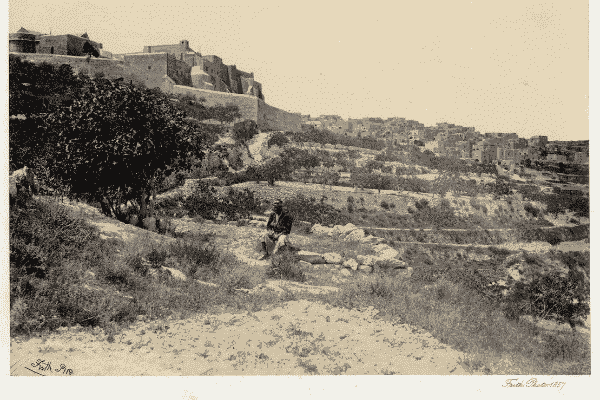
The Camp David Accords
Despite the blood of at least two generations of diplomats and decades spent negotiating a peace, a solution seems not bound to be found.
An event that gave hope, for a short time, to the states of the whole world was on September 17, 1978 at Camp David, Maryland.
The protagonists of the agreements are Israeli Prime Minister Menachem Begin, Egyptian President Anwar Sadat and Us President Jimmy Carter. The agreements are the result of secret negotiations between Egypt and Israel whose purpose is the end of hostilities between the two countries and the creation of possible peace scenarios. Fundamental is the point on the withdrawal of the Israeli army from Sinai in exchange for Israel's free movement in the Suez Canal and the Gulf of Aqaba. The treaty did not lead to the total relaxation of relations, but it was an important step forward for the future Israeli-Egyptian peace treaty of March 26, 1979. The reassuring presence of the American Carter was certainly strategic to give a powerful and positive image of the United States in the midst, let's remember, of the Cold War.
Egypt was thus the first Arab country to recognize the State of Israel. This cost the life of President Sadat, who was assassinated on October 6, 1981.
The Camp David Accords were followed by some very important seconds, which took the name of the Oslo Accords. Both agreements boded well for the international community, but it was disappointed within a few years. The glimmer of lasting peace is becoming more and more remote.
The First Intifada
On December 8, 1987, the Intifada was born. This Arabic word means "revolt", "riot" and is a popular movement that arose spontaneously to demonstrate against the Israeli presence in the occupied territories.
The First Intifada broke out when an Israeli truck struck two vans carrying Gaza workers to Jabaliyya refugee camp. The revolt quickly expanded to other refugee camps until it entered Jerusalem.
Israel's repression was so harsh that it was condemned by the United Nations. Extremist groups of Islamic origin gave birth in Gaza to the radical movement of Hamas, acronym in Arabic for Islamic Resistance Movement .
Mind Hamas prefers armed struggle, the positions of the PLO take an increasingly diplomatic path, so much so as to participate in perhaps the most significant peace agreements between Israel and Palestine that lead to the end of the First Intifada.
The Oslo Accords
On July 13, 1992, Yitzhak Rabin formed the 25th Israeli government, assuming the post of Prime Minister and Minister of Defense. Shimon Peres is Minister of Foreign Affairs.
Israeli Prime Minister Yitzhak Rabin and PLO leader Yasser Arafat are the protagonists of the famous photograph that portrays their handshake under the almost paternal gaze of US President Bill Clinton on September 13, 1993 in Washington.
The two enemy leaders have just signed the "Declaration of Principles on Provisions for Interim Self-Government",better known as the Oslo Accords.
The Charter presents this introduction"The Government of the State of Israel and the PLO team, which represents the Palestinian people, agree that it is time to put an end to decades of confrontation and conflict, to recognize each other's legitimate and political rights, and to strive to live in peaceful coexistence, mutual respect and mutual security, to reach a just peace agreement, lasting and global, and to a historic reconciliation, through the agreed political process".
Excellent premises. However today we know that they led to yet another hole in the water.
Not only the actors concerned, but the whole world looked to this Declaration of '93 with great hope for a long-awaited peace. Photographs and videos of the two enemies of a lifetime shaking hands with their backs make President Clinton go around the globe.
In Oslo for the first time the Nobel Peace Prize is divided between three people: Yasser Arafat, YitzhakRabin and Shimon Peres.
A Nobel Prize judged controversial by many.
The three areas of the West Bank
On September 9, 1993, Yasser Arafat signed a letter addressed to Rabin in which all the required commitments were explicitly made. The main ones are the condemnation of terrorism and the affirmation of Israel as a sovereign state.
Under the Oslo Accords, the West Bank is divided into three main areas: Area A under full Palestinian control; Area B under Palestinian administrative control and Israeli control with regard to security; Area C which is under full Israeli administrative and security control.
However, the picture is much more complicated.
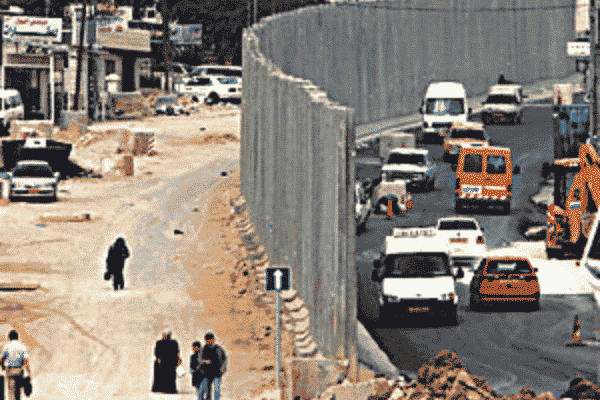
The Taba Accords
Many Israeli settlements have slowly and steadily spread within the West Bank and East Jerusalem.
These settlements are judged by the international community as illegal because they violate Article 49 of the Fourth Geneva Convention, moreover ratified by Israel itself.
On September 24, 1995, Yitzhak Rabine Yasser Arafat met again in Washington DC to ratify some points of the Oslo Accord regarding the withdrawal of Israeli troops from most of the occupied territories. The document is called the Oslo II Accords or the Taba Agreement. This will be Rabin's last signature.
If the world breathes yet another sigh of relief, increasingly ferocious acts of terrorism by religious nationalists and Israeli settlers are growing in Israel. The violent protests are directed at Prime Minister Rabin, accused of treason and collaboration with the enemy. The signing of the Oslo II Agreement will be his last:on November 4, 1995, Rabin was assassinated in Tel Aviv by a man of the Israeli extremist right during a rally in defense of peace.
About a million people attended his funeral, including many Arab leaders who had never been to Israel before.
The Second Intifada
Continuous clashes, hatred, threats, kidnappings and violence of all kinds lead to a wave of fear and uncertainty among Israelis and Palestinians. After the assassination of the Prime Minister, Peres took his place for six months. The governments of the following years have presented increasingly harsh positions against the Palestinians.
On September 28, 2000, the Second Intifada or Al-Aqsa Intifada broke out, named after the mosque in Jerusalem. The straw that breaks the camel's back in an already extremely tense situation is the tragically famous walk to the Esplanade of the Mosques of the opposition leader in the Israeli Parliament Ariel Sharon accompanied by an armed escort. Palestinians interpret this gesture as a provocation. The esplanade is in fact the third holiest place for Muslims after Medina and Mecca and only the faithful are allowed to enter to pray in al-Aqsa.
It can be said that the Second Intifada definitively sanctioned the failure of the peace process undertaken, as we have seen, with the Oslo Accords of 1993.
Ariel Sharon, also called the bulldozer of Israel and the hawk of the Israeli right, once again rekindles the clashes in the heart of the Holy City. Scenes of stone throwing and incendiary bottles in the occupied Palestinian territories against the most armed army in the Middle East are repeated. Numerous suicide attacks were perpetrated against civilians in Israeli cities. As in the First Intifada, the number of victims, including many children, is tragic in this one. It is estimated that during the Second Intifada about 3,000 Palestinians and 1,000 Israelis lost their lives. The clashes subsided with the ceasefire in early February 2005.
This "riot" also highlighted the differences between the various Palestinian armed groups and in 2006 sanctioned the break between Hamas and al-Fatah, the main group within the PLO.
Conclusions
More than half a century after the Six-Day War, Palestine is still occupied. The Oslo Accords would have been an excellent opportunity to resolve the conflict, as at the time the prime minister was Rabin, leader of a moderate coalition and in favor of a peaceful solution to the long conflict.
However, professor and Middle East expert Marcella Emiliani reminds us in an interview that the famous handshake between the two enemies was only possible because the Oslo Accords did not deal with five crucial topics:
- Borders: the borders of Israel and a historic Palestine had to be defined for the first time
- Water resources: since 1967 even in the territories inhabited by the Palestinians, water systems are managed entirely by the State of Israel. This is serious when you consider that agriculture accounts for 80% of Palestinians (and only 3% of Israelis). For the former, the use of water is a matter of survival and since '67 Israel has taken possession of all usable water sources.
- The settlements: the migratory flows of Jews into Israel from all over the world have never stopped. Even in the territories that were to be returned to the Palestinians, settlements are multiplying.
- East Jerusalem and its future: It is important to remember that in 1980 Israel proclaimed a law whereby Jerusalem is recognized as the united, indivisible and eternal capital of the State of Israel.
- The right of return for Palestinian refugees
This last point is perhaps the most tragic. It is important to remember that, once expelled from their homes during and after the Nakba, Palestinians never had citizenship recognized in the countries to which they emigrated, always remaining with the status of refugees. For purely strategic reasons, the only country that has granted citizenship to Palestinians is Jordan.
The work of Pro Terra Sancta
Despite the controversial Nobel Peace Prize in 1994, unfortunately, the five points listed above remain unsolved to this day.
Pro Terra Sancta has been operating in Palestine since 2006. The endless conflict with Israel has never stopped our support for the preservation of the Holy Places and the communities of the Holy Land thanks to the donations of all. An example is the constant aid to the Christians of the parish of Gaza and to the "butterfly children", suffering from rare pathologies related to bullous epidermiolysis and who need continuous care.
Our presence is the greatest value because the Holy Land is where all peoples have their roots and all our doing has the desire to foster and build links between the Holy Land and the world.







